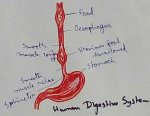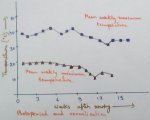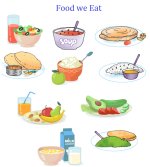Adaptation in Plants
We know plants and animals are living things. To survive they need food, water, air, shelter, the right climate and also the right type of soil too. Plants and animals live in various places.
They live in places where it is very cold as well as in places where it is hot and dry. They also live in rivers and lakes and in the salty water of the oceans.
Plants and animals living inside water should be able to breathe air dissolved in water. Those living in deserts should be able to survive with very little water.
Plants and animals living in a certain place survive by adapting themselves to the conditions of that place. Like a fish living in water has a different body structure as compared to animals living on land. Fishes have gills to breathe under water. And they cannot survive outside water because they cannot breathe outside water.
The leaves of a water lily plant that lives in water are thin and big and they float in water. They look very different from the leaves of a cactus plant which are like sharp needles. Cactus and camels can survive in deserts because they can store water in their bodies.
There are so many types of plants and animals. Each place has its own problems because of the adaptations to their surroundings. Plants and animals living in different surroundings look different too.
From Adaptation in Plants to HOME PAGE
Recent Articles
-
Eleventh Grade | Eleventh Grade Science | Eleventh Grade Math
Jun 27, 25 12:26 AM
Eleventh grade biology has been designed in accordance with the recommended topics. We will cover all the topics in biology very exciting and interesting way. -
Explain Digestion of Food | Salivary Glands | Oesophagus | Stomach
Jun 27, 25 12:20 AM
Before the digestion is start by the different enzymes secreted from the different digestive glands food must be turned and chut or mixed with saliva inside the mouth. -
Explain Human Digestive System | Mouth | Tongue | Pharynx | Teeth
Jun 21, 25 01:15 PM
Digestive system is a system of alimentary canal and digestive glands. Alimentary canal- alimentary canal is a tube of variable diameter having muscular wall and glandular epithelial tissues which sta… -
Vernalisation in Plants | Definition | Mechanism | Devernalization |
Jun 18, 25 01:34 PM
Definition of vernalisation- The change of flowering habit due to the low temperature treatment is known as vernalisation. This is a physiological process which was denoted by Clipart in 1857 invite b… -
The Food We Eat | Food we Get from Plants and Animals | Carbohydrates
Jun 15, 25 03:20 PM
What are the food that we should eat? Find out the names of ten food items in the word maze. Write the names in the correct column of the table given below. Food we get from plants Food we get from an…




New! Comments
Have your say about what you just read! Leave me a comment in the box below.